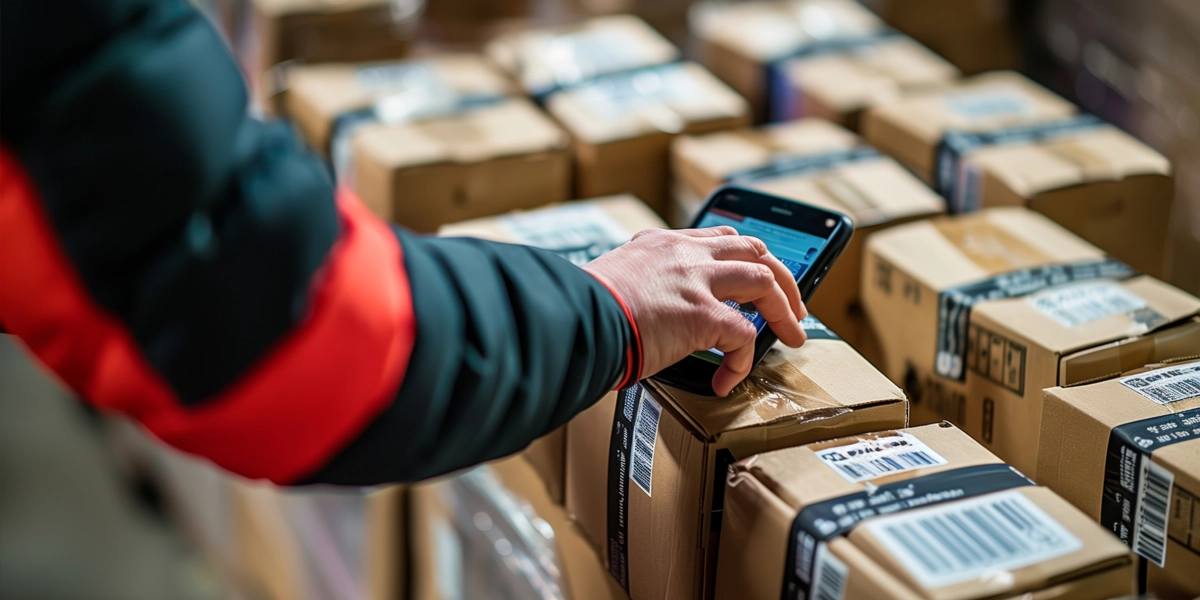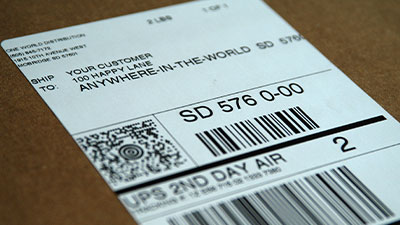In This Article:
Returns management is a critical concern for any online retailer. It involves coordinating customers’ returns, inspecting the returned goods, and deciding whether to restock, repurpose, or dispose of them. Effective returns management ensures customer satisfaction while minimizing financial losses.
But many scaling ecom brands begin to ask the question: Is it worth repackaging returns for my business? Understanding the financial implications and potential benefits of repackaging can guide your decision-making process.
This article will explore everything you need to know about ecommerce returns management, including:
- The cost of returns in ecommerce
- Strategies to reduce returns
- Calculating return rates in retail
- The role of a sustainable returns process with a focus on repackaging
- Best practices for managing ecommerce returns
The High Cost of Returns in Ecommerce
Returns are a huge expense for online retailers, often turning potential profits into losses. The logistics, restocking, and potential devaluation of returned products impose substantial financial burdens on ecommerce businesses.
Supporting Data and Statistics
- The average ecommerce return rate is around 20-30%.
- Ecommerce return rates can be 2X to 3X higher than the physical stores.
- In 2022, the cost of retail returns in the United States reached 817 billion U.S. dollars, with a quarter of it stemming from online retailing.
- Returns cost businesses about 66% of the original item’s price.
Key Factors Contributing to High Return Rates
- Inaccurate Product Descriptions: Misleading or incomplete descriptions lead to customer dissatisfaction when products don’t meet expectations.
- Sizing Issues: Apparel items often suffer from inconsistent sizing standards, causing customers to return items that don’t fit properly.
- Inadequate Packaging: Insufficient protection during transit can result in damaged goods and subsequent returns.
Addressing these issues is essential for reducing return costs and improving customer satisfaction. Accurate descriptions and consistent sizing guides are critical strategies that can mitigate this financial strain.
Additionally, choosing the right third-party logistics provider is crucial for efficient returns management. A capable 3PL can help reduce logistics expenses by optimizing inventory management and using sustainable fulfillment practices so you can improve your entire fulfillment approach.
How to Effectively Reduce Returns in Ecommerce
1. Provide Detailed Product Information and Imagery
Reducing returns in ecommerce starts with setting realistic customer expectations. Accurate and comprehensive product descriptions are pivotal. These descriptions should include:
- Material Composition: Specify the types of materials used. For instance, if the product is a garment, mention whether it’s made of cotton, polyester, or a blend.
- Dimensions and Sizing: Offer exact measurements. This is especially crucial for apparel and furniture items where size can significantly impact customer satisfaction.
- Functionality and Features: Highlight key features that differentiate your product from others on the market.
High-quality images also play a critical role. Consumers rely heavily on visuals when making online purchases. We recommend showcasing products from multiple angles and allow customers to zoom in on details. It’s also best to include plenty of lifestyle photos so customers can contextualize your goods.
2. Offer Size Guides and Fit Recommendations
Minimizing returns is crucial for ecommerce businesses aiming to optimize profitability and customer satisfaction. Implementing effective ecommerce returns solutions, such as those offered by One World Direct’s Fulfillment Services, can significantly reduce return rates. To mitigate this:
- Create Comprehensive Size Charts: These charts should provide detailed measurements for each size option available. For example, a size chart for a shirt should include measurements for the chest, waist, length, and sleeve length. This ensures customers choose sizes that fit them accurately, reducing the likelihood of returns due to sizing issues.
- Provide Fit Guidance: Explain how to measure oneself accurately.
- Include Customer Reviews: Leverage user-generated content to offer real-world insights into how items fit different body types.
3. Improve Packaging to Prevent Damages
Implementing strategies to minimize return incidents is crucial for ecommerce businesses looking to reduce returns and enhance their overall ecommerce returns management. One effective method is improving packaging to ensure products arrive in pristine condition.
Use Protective Materials
- Bubble Wrap: Provides cushioning to delicate items.
- Packing Peanuts: Fills empty spaces, preventing movement during transit.
- Foam Inserts: Customizable protection for fragile goods.
Secure Packaging Techniques
- Double Boxing: Adds an extra layer of protection, ideal for high-value or fragile items.
- Seal with Quality Tape: Ensures packages remain closed and secure throughout the shipping process.
- Reinforced Corners: Reduces the risk of damage from impacts.
4. Use Customer Reviews and Q&A to Address Common Concerns
Listening to what customers have to say can make a big difference in reducing returns. Reviews and Q&A sections are goldmines of information about how your products are performing and whether or not they’re meeting customer expectations. By encouraging shoppers to leave reviews and promptly addressing their questions, you can:
- Build Trust: Detailed reviews from satisfied customers can help build trust with potential buyers, making them more confident in their decision to purchase.
- Make Informed Decisions: Honest feedback about product fit, quality, and usability can help potential buyers make more informed decisions and reduce the likelihood of returns.
- Prevent Misunderstandings: By answering questions in the Q&A section quickly and accurately, you can address any potential concerns or misunderstandings before a purchase is made.
But how exactly can you leverage customer reviews and Q&A sections to address common concerns? Here are some best practices:
Encourage Detailed Reviews
When reaching out to customers for reviews, try to go beyond just asking for a simple rating. Instead, encourage them to share specific details about their experience with the product. This could include things like:
- How well the product fits their needs or expectations
- The quality of materials or craftsmanship
- The ease of use or installation process
- Any other relevant features or benefits they noticed
Promptly Answer Queries
In addition to reviews, the Q&A section is another valuable source of information for potential buyers. By addressing questions in this section quickly and thoroughly, you can:
- Provide clarification on product details or specifications
- Offer guidance on how to use or care for the product
- Share additional insights or recommendations based on your expertise
Highlight Common Issues
As you start receiving more reviews, pay close attention to any recurring themes or patterns that emerge. For example, if multiple customers mention sizing issues with a particular clothing item, consider:
- Updating your size guide to provide more accurate measurements
- Adding detailed fit recommendations based on customer feedback
- Exploring alternative sizing options (e.g., offering petite or plus sizes)
The Power of Customer Reviews
Including fit preferences or customer reviews further enhances the accuracy of size selection. Customer reviews often contain valuable insights about how a product fits in real-life scenarios compared to the standard size chart. Highlighting these reviews helps new shoppers make informed decisions.
5. Make Returns Easy with Clear Instructions and Prepaid Labels
For ecommerce businesses, it’s important to find ways to reduce returns. One effective method is to have a clear and user-friendly returns policy. By providing customers with simple instructions on how to return items, you can make the process smoother for everyone involved.
Why Clear Instructions Matter
Having clear instructions for returns is beneficial in two main ways:
- Customer Satisfaction: When customers can easily understand how to return a product, they are more likely to be satisfied with their overall shopping experience. This can lead to higher retention rates and positive word-of-mouth.
- Operational Efficiency: Clear instructions also help streamline internal processes, making it easier for your team to handle returns quickly and efficiently.
Prepaid Labels
One way to further simplify the returns process is by offering prepaid labels. Here’s why this can be beneficial:
- Convenience for Customers: Prepaid labels remove the hassle of arranging and paying for return shipping. This added convenience can greatly improve the customer experience.
- Reduced Errors: With prepaid labels, you can ensure that returned items are sent back to the correct address. This helps minimize the risk of lost packages or other logistical errors.
- Tracking and Accountability: When using prepaid labels, you and your customers can easily track the status of a return shipment. This provides an extra layer of transparency and accountability throughout the process.
Reducing returns in ecommerce requires a multifaceted approach that combines accurate product information, high-quality imagery, effective sizing guides, robust packaging solutions, leveraging customer feedback, and streamlining the returns process. Implementing these strategies not only minimizes return rates but also enhances overall customer satisfaction and loyalty.
One World Direct offers a comprehensive returns management service that includes providing prepaid labels for hassle-free returns. Their expertise in this area can help turn what might have been a pain point into a smooth part of your business operations. To explore other effective strategies for managing return rates check out our guide on ecommerce return rates.
To enhance customer interaction and satisfaction further, consider utilizing One World Direct’s Call Center Services, which ensure all customer inquiries are handled promptly and effectively. Such services contribute to a reduction in returns through better pre-purchase clarity.
How to Calculate Return Rate
Understanding the return rate in ecommerce is crucial for maintaining operational efficiency and customer satisfaction. The return rate is the percentage of products sold that customers return within a specific period.
To calculate the return rate in retail, you can use the following formula:
Return Rate (%)= (Number of Returned Items/Total Number of Sold Items)× 100
Here’s a step-by-step breakdown:
- Number of Returned Items: Count the total number of items that customers returned within a specific period.
- Total Number of Sold Items: Count the total number of items sold to customers within the same specific period.
- Calculate the Return Rate: Divide the number of returned items by the total number of sold items and then multiply by 100 to get the percentage.
Example
If a store sold 1,000 items in a month and 50 of those items were returned, the return rate would be calculated as follows:
Return Rate (%)= (50/1000)×100= 5%
So, the return rate for that month would be 5%.
Why Monitoring Return Rate Matters
Monitoring this metric provides valuable insights into various aspects of your business:
- Product Quality and Description Accuracy: High return rates may indicate issues with product quality or discrepancies between product descriptions and actual items.
- Customer Satisfaction: Frequent returns can signal dissatisfaction, prompting you to reassess your customer service and product offerings.
- Inventory Management: Understanding return patterns helps in optimizing stock levels and reducing overstock or stockouts.
- Cost Control: Returns management incurs costs—shipping, restocking, repackaging—tracking these can help identify areas for cost reduction.
Tracking and analyzing your return rate enables data-driven decision-making that enhances both profitability and customer loyalty. Evaluating this metric regularly ensures that your returns management strategy remains effective, driving continuous improvement.
This analytical approach not only streamlines operations but also aligns with sustainable practices by minimizing waste through efficient repackaging and restocking processes.
The Role of Repackaging in Building a Sustainable Returns Process
Embracing a sustainable return process requires careful consideration of how returned items are handled. Repackaging plays a crucial role in this strategy, as it ensures that resources are not wasted and enhances profitability. By assessing the condition of returned products and determining if they can be repackaged for resale, businesses can significantly reduce their environmental impact.
Key Components of Repackaging for Sustainability:
1. Inspection and Quality Control
Each returned item undergoes a thorough inspection to ensure it meets quality standards. Identifying minor damages or wear-and-tear informs the next steps in the repackaging process.
2. Cleaning and Refurbishment
Items that pass the initial inspection are cleaned and, if necessary, refurbished. For instance, apparel may be steamed, while electronics might undergo functionality testing.
3. New Packaging Materials
Utilizing eco-friendly packaging materials is essential. Reusing boxes and packing materials where possible cuts down on waste and promotes sustainability.
4. Documentation and Labeling
Proper documentation ensures the traceability of repackaged items. Clear labeling helps streamline inventory management and maintains transparency with customers.
Integrating these practices into your returns management system contributes to a more sustainable business model. It aligns with consumer expectations for environmentally responsible brands while optimizing return on investment through effective product reuse.
Alternatives to Repackaging
While repackaging offers several benefits, it’s important to weigh all options and choose the best approach for your brand. Here are some alternatives if repackaging isn’t feasible:
- Liquidation: Partnering with companies that purchase used inventory and resell it to discount stores like TJ Maxx can be a practical solution. This option helps recoup some of the costs associated with returns and prevents products from going to waste.
- Sustainable Disposal and Recycling: For items that cannot be repackaged or liquidated, sustainable disposal and recycling are crucial. Companies specialize in environmentally responsible disposal methods, ensuring that materials are recycled or disposed of in an eco-friendly manner.
- Donation: Donating returned items that are still in good condition to charities or non-profit organizations is a socially responsible option. This not only helps those in need but also enhances your brand’s image as a community-oriented and sustainable business.
By considering these alternatives, businesses can develop a comprehensive returns management strategy that balances profitability with environmental responsibility. Weighing all options and choosing the best approach for your brand ensures that your returns process is both sustainable and efficient.
Take Care of Returns Management and All Your Fulfillment Needs with OWD
Taking control of your returns management is essential for maintaining profitability and customer satisfaction. One World Direct offers tailored fulfillment services to streamline return management and everything else you need to create the ultimate online shopping experience. By leveraging our expertise, you can benefit from:
- Personalized-to-Consumer (P2C) fulfillment services: Offer easy ecommerce personalization to your shoppers so they can customize your products with personalized engravings, embroidery, direct-to-object printing, and include personalized greeting cards in each order.
- Call center services: 18-hour support via phone, email, and live chat with US-based agents ensures seamless communication with your shoppers.
Adopting a comprehensive strategy that incorporates reducing return rates and optimizing the post-return experience is crucial. With the experts at OWD, you can improve your entire fulfillment experience. Reduce picking and packing errors, improve order picking accuracy, and lower operating costs. Partner with One World Direct and discover how our personalized solutions can elevate your business.
In This Article:
Subscribe to our Newsletter
Tincidunt urna mauris eu quam vulputate lobortis sit. Purus feugiat arcu nunc quisque massa ut.



























